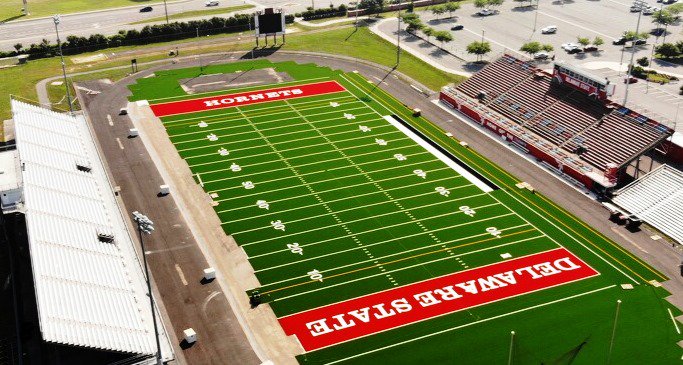USA Football’s Development Model teaches how to be an athlete first
It requires creative, innovative thinking to make something new or evolve it for the better.
Reimagining the fitness and fun of our country’s favorite sport is the Football Development Model (FDM). Led by USA Football, a member of the U.S. Olympic Committee, the FDM reimagines how football is played and experienced. Some national governing bodies of sport have traveled this road in recent years. None cover a footprint of athletes and fans larger than football.
Some national governing bodies of sport have traveled this road in recent years. None cover a footprint of athletes and fans larger than football.
Approximately 20 leaders spanning youth to college coaches, athletic directors at universities, youth football league commissioners, and medical and long-term athlete development experts comprise the FDM Council, whose purpose is to guide the creation of this structured framework. The FDM is an athlete’s 21st century roadmap – at any age – to enjoy the fun and athleticism of football through sport activities that are developmentally appropriate physically, mentally and socially.
A key to smarter and better football, and virtually any sport, is to learn to become an athlete before you learn to become a player.
What does it mean to be an athlete? It means obtaining competency in areas such as agility, balance, coordination, speed, stamina and strength. When this is your foundation, you can play any sport and engage in any type of exercise for the rest of your life. And what an 8-year-old is ready to do is very different than what a 14-year-old is ready to do. And not all 11 year-old boys and girls are the same. The FDM will take this into consideration.
 At its center, the FDM stands for having fun, developing a base of athleticism, and learning skills step-by-step. Learning developmentally and age-appropriate skills allows you to compete, which is something kids love and differentiates sport from exercise.
At its center, the FDM stands for having fun, developing a base of athleticism, and learning skills step-by-step. Learning developmentally and age-appropriate skills allows you to compete, which is something kids love and differentiates sport from exercise.
The model will be a pathway where anyone can play football for life, whether it be recreationally or highly competitive.
Football has become a polarizing sport because of national narratives that have created an emotional line in the sand: if you do not accept that football causes CTE, then you are a CTE denier. The science related to football is much more nuanced, and parents are desperate for truth and want what’s best for their kids. This underscores the need for respected thought-leaders like those comprising the FDM Council to develop a consensus regarding a safe and healthy pathway to play football from youth to high school and beyond.
Football, like many other sports, is an aggressive, rugged contact sport – one in which the rules prohibit deliberately inflicting harm on your opponent. We’re understanding safety elements of the sport and diverse ways to introduce the sport that were not thought of 20 or even 10 years ago. This must be part of how you reimagine football and all other sports.
In addition to fitness and physical literacy, which statistics show is lacking in children today, there’s a social harmony in football that is unique in sport. Further, football may be one of the most equal opportunity sports in this country. We must create a safe, science-based narrative for football and all sports, and this must counter both fear-based narratives as well as the ever-increasing propensity for youth to replace sport with virtual reality on a screen.
Through the FDM, USA Football is taking a leadership role in a hugely important public health matter. As the chair of the FDM Council. I believe that we can – and must – change youth sport for the better in our country. It is the right thing to do for our children and for our society.
Dr. Brian Hainline is the Chief Medical Officer of the NCAA and serves as the chair of USA Football’s Football Development Model Council. USA Football is the sport’s national governing body and a member of the U.S. Olympic & Paralympic Committee.







